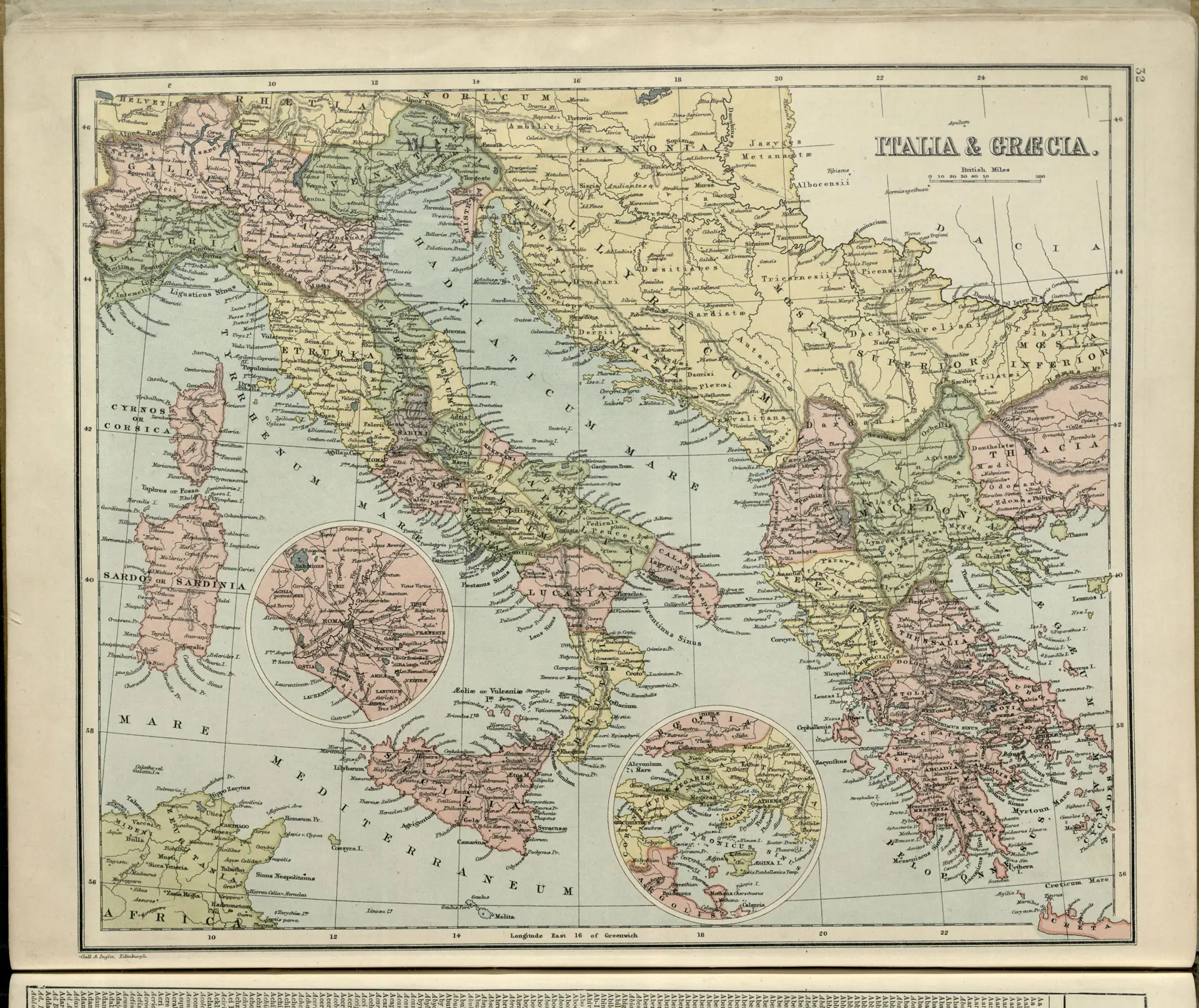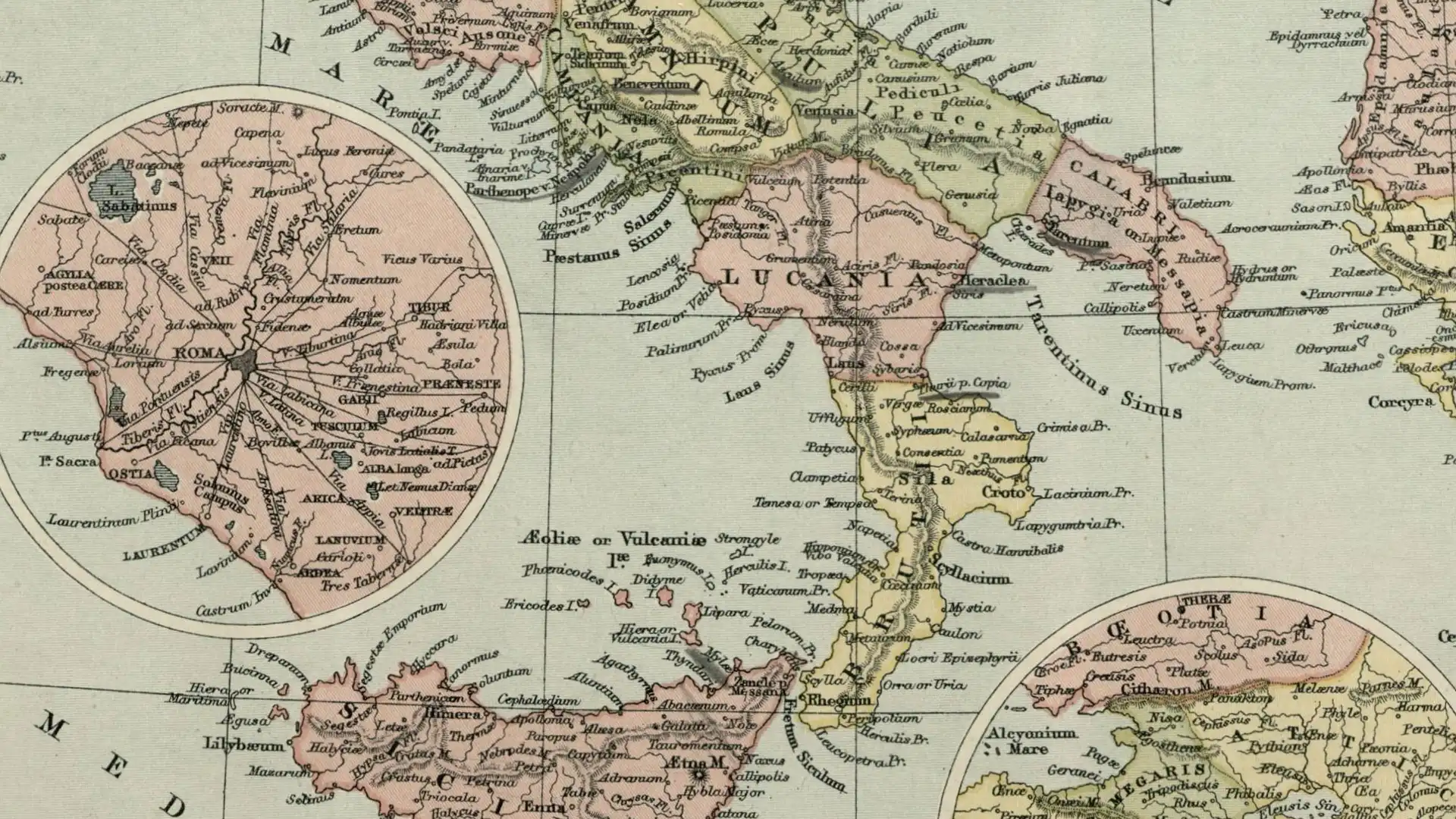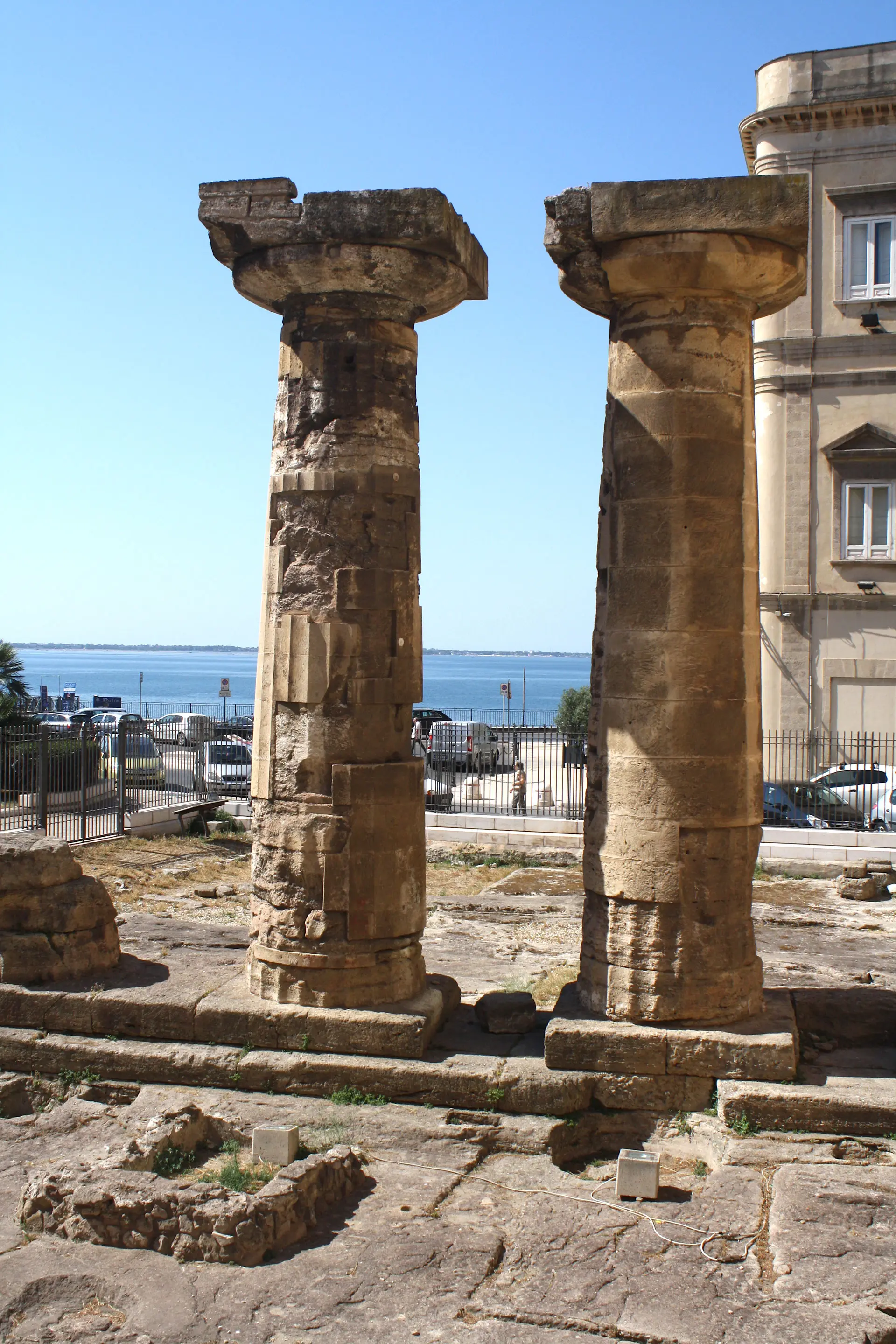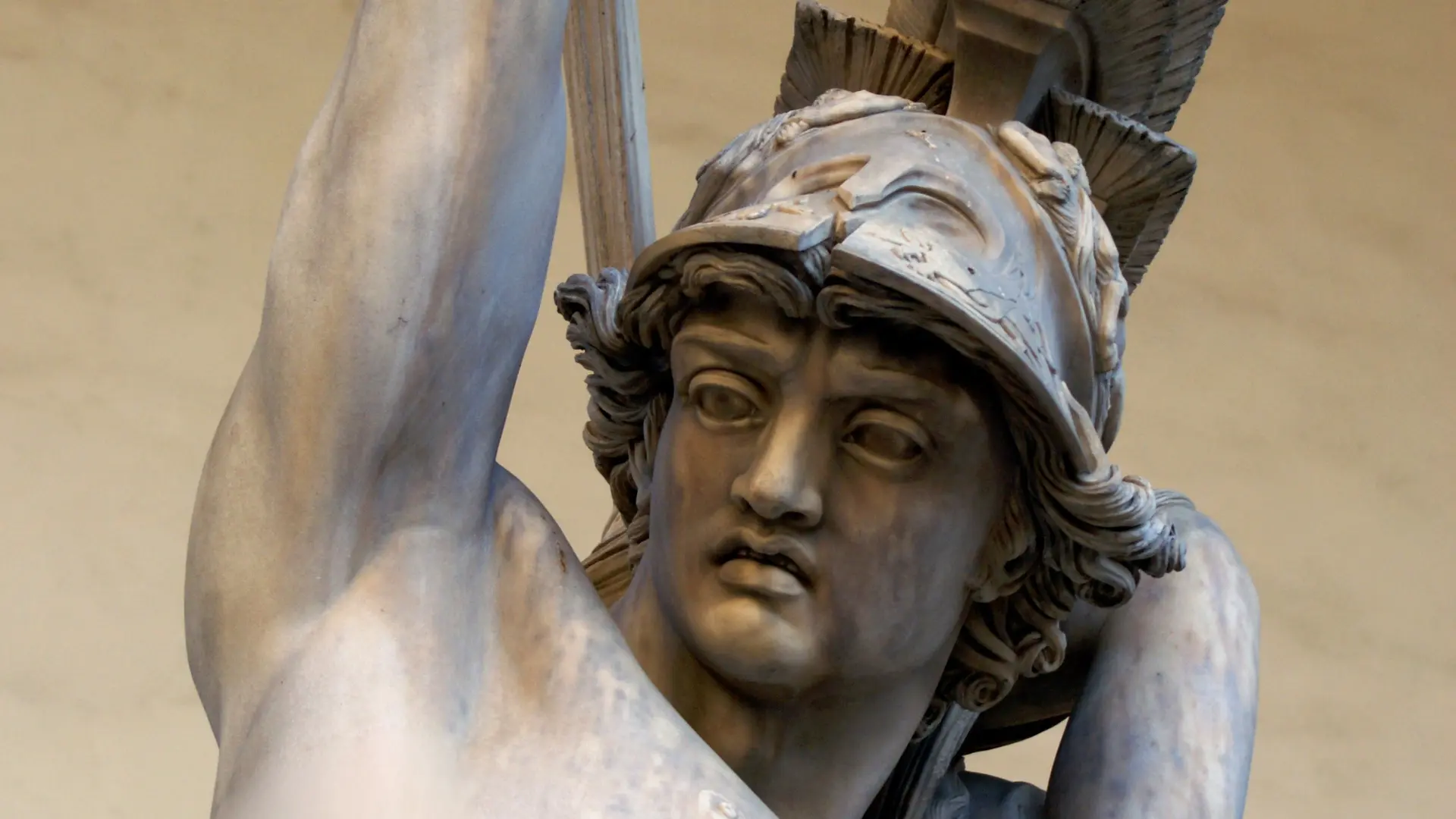The Marks
At the very beginning of the second episode of Ulysses, Stephen Daedalus is taking a class of boys through a lesson about the Pyrrhic Wars, waged in Southern Italy from about 280BC.
The two towns mentioned in the text are both marked in pencil in the Sandycove Atlas. Eight other marks mostly relate to battles and sieges of the Pyrrhic Wars, as if the boys had been given ten places to learn for homework.


The Texts
2 Nestor
- You, Cochrane, what city sent for him?
- Tarentum, sir.
- Very good. Well?
- There was a battle, sir.
- Very good. Where?
The boy’s blank face asked the blank window.
Fabled by the daughters of memory. And yet it was in some way if not as memory fabled it. A phrase, then, of impatience, thud of Blake’s wings of excess. I hear the ruin of all space, shattered glass and toppling masonry, and time one livid final flame. What’s left us then?
- I forget the place, sir. 279 B. C.
- Asculum, Stephen said, glancing at the name and date in the gorescarred book.
- Yes, sir. And he said: Another victory like that and we are done for.
Place names: Tarentum, Asculum.


